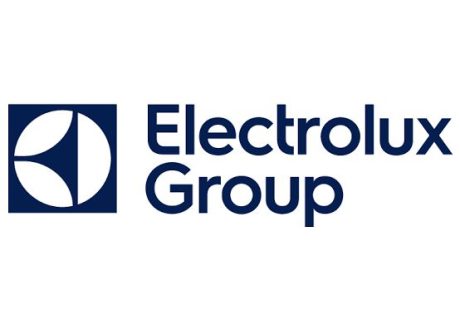
Electrolux Group seeks boosting its market share in Egypt..focuses on sustainable innovation
Electrolux Group seeks boosting its market share in Egypt with its strategy focusing on sustainable ...

The World Bank highlighted the importance of testing electric buses (e-buses) in real-life conditions in Egypt as a critical first step toward large-scale electrification and modernization of the mass transit system.
This falls within the framework of the World Bank’s support to the deployment of about one hundred electric buses across the Greater Cairo area.
These e-buses are part of the World Bank’s Greater Cairo Air Pollution Management and Climate Change Project, which aims to make Cairo a greener, more livable city. Public transport will play a big part: after energy, transport is Egypt’s second largest producer of greenhouse gas emissions. Modern and reliable e-buses will encourage commuters to shift from cars to buses, substantially reducing transport emissions.
Over the last several years, Egypt’s capital city of Cairo has been taking concrete action to tackle its infamous gridlock and provide residents with faster, cleaner, and more affordable ways to get around.
According to Nicolas Peltier-Thiberge, Global Director of Transport at the World Bank, this project is an important test for e-buses, and a key first step in the transition toward a modern and sustainable public transit system across Greater Cairo.
“Our goal is to help catalyze the electrification and modernization of Cairo’s mass transit system,” said Peltier-Thiberge. “But first we need to find out how e-buses can perform in a busy urban environment, get commuters excited about bus travel, evaluate user response, and address unforeseen challenges, including when it comes to the charging and maintenance of buses.”
In Cairo, levels of fine particulate matter, which pose the greatest human health risk, are several times higher than the levels recommended by the World Health Organization. Air pollution is one of the city’s biggest environmental health issues. Every year, as many as two million people get medical treatment for respiratory problems related to bad air quality in Cairo. These health issues carry hefty economic costs, equivalent to about 1.4 percent of Egypt’s GDP each year.
“Our goal is to help catalyze the electrification and modernization of Cairo’s mass transit system. But first we need to find out how e-buses can perform in a busy urban environment, get commuters excited about bus travel, evaluate user response, and address unforeseen challenges, including when it comes to the charging and maintenance of buses,” said Peltier-Thiberge.
“In Greater Cairo, public transit has a sizeable impact on public health and environmental conditions,” said Ibrahim Dajani, Practice Manager for Transport in the World Bank’s Middle East and North Africa region. Around 63 percent of the 22 million motorized trips Cairenes take every day are on public transport. Cairo’s public buses, fueled by low-quality diesel, are responsible for a third of the air pollution from suspended particulate matter. “Electric buses, which don’t release any direct emissions into the atmosphere, could go a long way in tackling the city’s air pollution crisis,” he said.
The new buses will also transform passengers’ experience with frequent, reliable, and comfortable service. The buses will feature air conditioning, Wi-Fi, and USB sockets for charging phones onboard. And they will be fully accessible to disabled passengers. Security cameras will be installed both inside and outside the buses, along with emergency kiosks. These upgrades will be particularly beneficial to women and girls, who often cite personal safety as a key concern when using mass transit.
The move toward electric buses also makes good economic sense. As demonstrated in a World Bank study released at COP27 in Sharm El-Sheikh, while the sticker price of electric vehicles remains higher than for vehicles with internal combustion engines, long-term savings on maintenance and fuel (or, in this case, electricity) more than offset the higher upfront cost. And the environmental and health benefits of electrification make the economic case even stronger. After a pilot phase, the expansion of Cairo’s e-bus fleet, combined with an expected drop in battery prices, could make e-buses even more economical.
Electrifying Cairo’s bus fleet will require extensive planning and coordination. The first steps include e-bus design and purchase, retrofitting bus depots, and route planning to decide where the buses will run. Different government agencies will need to work together to figure out how to regulate electric vehicles—electrifying transport creates strong bonds between the energy and transport sectors, which brings challenges and opportunities for new business models, new market players, and innovative technology.
“When you start investing in electric mobility, you have to think not only about the vehicles themselves but also about the supporting infrastructure, such as the electrical supply system and charging stations,” said Susan Lim, a World Bank Senior Transport Specialist who lives in Egypt and is working on this project. “As we prepare for the rollout of e-buses in Cairo, it is essential that the transport and energy sectors coordinate closely to consider all these pieces together and ensure a smooth rollout.”
Several other initiatives are currently underway to help transform the way Cairo’s residents move around. The government is investing heavily in mass transit infrastructure, including revamping the city’s busy metro system and extending Cairo Metro Line 3. An ambitious light rail project is taking shape, with the first phase already carrying passengers between Cairo and Egypt’s New Administrative Capital. Recent fuel subsidy reforms are making a significant difference as well and have reduced the number of cars on the road by an estimated 14% since 2016.
These various programs, addressing many different forms of public transport, all contribute to the same vision. Cairo is one of the most congested urban centers in the world. A move toward e-buses and other forms of sustainable mass transit will give the city a chance to reinvent itself. Egypt has a bold vision for Cairo, and its potential impact on climate, on the economy, and on people’s daily lives is hard to overstate.
اترك تعليقا